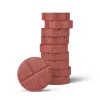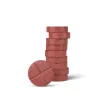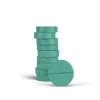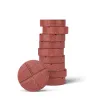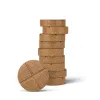7-Hydroxy-mitragynine, often referred to as 7-OH, is a naturally occurring terpenoid indole alkaloid found in small quantities within the leaves of Mitragyna speciosa, a tropical tree native to Southeast Asia.
First identified in 1994, it has drawn scientific attention due to its structural relationship to the plant’s principal alkaloid, mitragynine, and the challenges involved in obtaining it in meaningful quantities.
Today, 7-OH is popular among many adults, especially in the form of 7-Hydroxy tablets, but few know the methods used to produce it. So, how is 7-Hydroxy produced?
Mitragyna Speciosa: A Historical Background
Mitragyna speciosa grows in Thailand, Indonesia, Malaysia, Myanmar, and Papua New Guinea. The tree has been cataloged by botanists since the 19th century, with early observations noting its distinctive evergreen foliage and regional prevalence. While the traditional use of its leaves has a long history, the specific alkaloid 7-OH was not recognized until much later.
In 1994, researchers first reported the isolation of 7-OH as a distinct indole alkaloid present in very small amounts in the plant’s leaves, according to findings published on the Journal of Pharmacology.
This discovery was significant because it expanded the known chemical profile of M. speciosa and opened new avenues for studying its biosynthetic pathways. Over the years, advances in chromatography and spectroscopy have made it possible to confirm its presence and explore methods for synthesis.
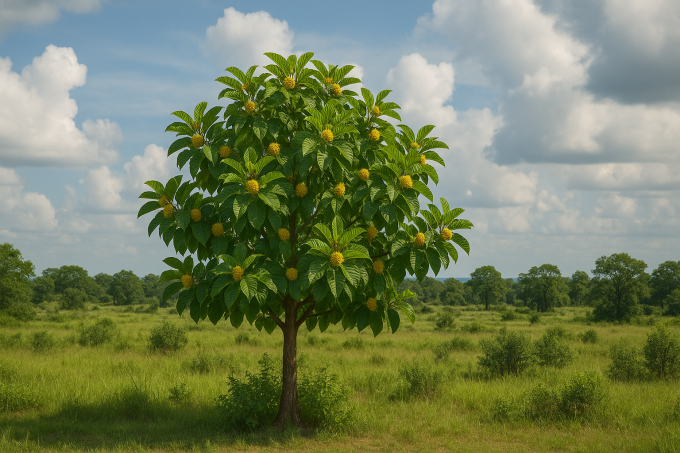
7-Hydroxy: A Scientific Background
7-OH is part of the terpenoid indole alkaloid family, a diverse class of natural compounds derived from tryptamine and monoterpene units.
Structurally, it is closely related to mitragynine but contains a hydroxyl group at the 7-position on the indole ring—a small change that distinguishes it chemically.
In nature, 7-OH occurs at less than 2% of total alkaloid content in M. speciosa leaves.
Studies suggest it may form through oxidative processes acting on mitragynine, either enzymatically within the plant or under specific environmental conditions. These pathways have inspired laboratory methods that replicate the transformation.
Natural Occurrence in Plants
Mitragyna speciosa thrives in humid, tropical environments, and factors such as soil composition, climate, and harvest timing can influence alkaloid profiles.
Mature leaves often contain higher total alkaloid concentrations than younger foliage, but even under optimal conditions, the percentage of 7-OH remains low.
Analytical measurements confirm that even concentrated plant extracts yield minimal amounts of 7-OH—often around 1–2% of the total alkaloid fraction. This scarcity is one reason why researchers rely on synthetic and semi-synthetic production methods to obtain usable quantities.
Laboratory Derivation Processes: How 7-OH is Made
Because direct extraction yields such small amounts, most 7-OH used in research and sold commercially begins as mitragynine extracted from M. speciosa.
One widely studied semi-synthetic route involves oxidizing mitragynine in a tetrahydrofuran/water mixture with bis(trifluoroacetoxy)iodobenzene (PIFA) at 0 °C under an inert atmosphere. This selective oxidation transforms the indole nucleus, producing 7-OH, which is then purified through column chromatography.
Innovative approaches such as the electrical breakdown-in-liquid (EBL) reactor have also been developed. In this process, powdered kratom material suspended in solution is exposed to plasma discharge, initiating advanced oxidation processes (AOPs) that convert mitragynine to 7-OH without traditional chemical oxidants.
Beyond these transformations, researchers have achieved complete laboratory syntheses of 7-OH without relying on plant-derived precursors.
A notable example is a 12-step asymmetric total synthesis that begins with commercially available starting materials and mimics natural biosynthetic transformations.
This route, reported in 2022, achieved an overall yield of more than 11% and demonstrated the feasibility of producing 7-OH entirely synthetically. Such approaches offer greater control over purity and composition.
Purification and Analytical Verification
Once synthesized or transformed, 7-OH must be separated from other alkaloids and byproducts.
Centrifugal partition chromatography (CPC) is often the first step, followed by high-performance liquid chromatography (HPLC) to refine purity levels. These techniques are particularly effective at removing residual mitragynine and closely related compounds.
Verification of chemical identity and purity relies on advanced analytical methods. High-resolution mass spectrometry confirms molecular weight, nuclear magnetic resonance (NMR) spectroscopy details atomic connectivity, and UV detection via HPLC can provide quantitative data.
Many laboratories, such as the ones that test our products here at 7-OH Factory, use a combination of these techniques to ensure accuracy and reproducibility.
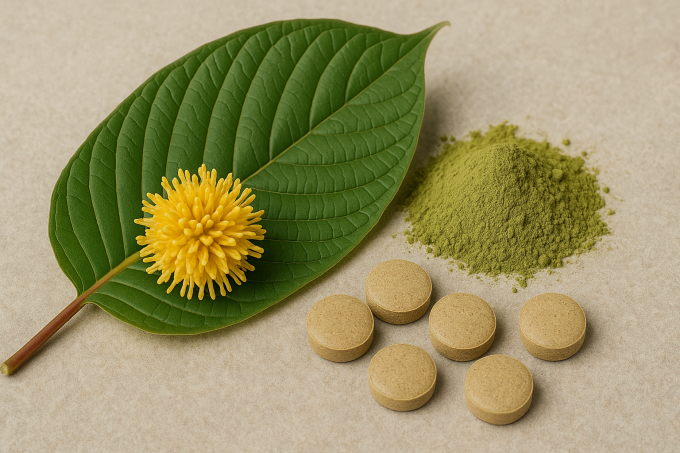
How 7-OH is Made: In Conclusion
First isolated from Mitragyna speciosa in 1994, 7-Hydroxy-mitragynine is a minor alkaloid that has since become an important subject in natural products chemistry.
Its rarity in plant material has driven the development of multiple laboratory methods for production, from targeted oxidation of mitragynine to complete synthetic construction. Purification and verification rely on high-precision chromatography and spectroscopy, ensuring the integrity of the final product.
Today, the creation of 7-OH reflects the intersection of traditional botanical knowledge and modern chemical innovation—a field where analytical rigor meets the complexities of nature’s own molecular architecture.




